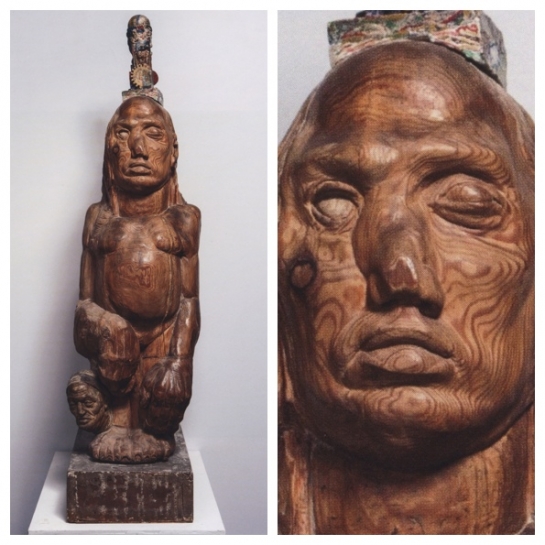Winking in Art

Inokentii Suvarov, Wisdom with detail (1928) Coloured wood, chalk, paint. 140 cm high. State Russian Museum, St. Petersburg
Russian artists in the early 20th century turned to the West to absorb the latest trends happening in Paris. That’s the conventional story. Yet, little known, at the same time they were also turning eastwards towards Siberia and Russia’s oriental cultures where they absorbed Tibetan Buddhism, Hinduism and shamanism among other traditions. That’s the thesis behind a current exhibition at the Palazzo Strozzi in Florence, a site for many thoughtful shows.1 I was particularly taken by this figure called Wisdom by Innokentii Suvarov (1898-1947), an artist I was not familiar with. He carved it out of a tree trunk to make, according to the catalogue, a shamanic figure on a Buddhist-influenced base. Out of her head, though, appears a small worker with a cogwheel symbolising, in what seems to me like an oxymoron, “Soviet wisdom.” Be that as it may, you should notice what the curators, of course, did not: that this wise figure has dual perception. As so often on EPPH, she has one eye open and one closed. That symbolizes the two forms of perception crucial to both artists and spiritual minds everywhere: insight and out-sight. And what do spiritual minds have in common in all religious traditions? They search for wisdom. You will find other winking figures under Insight-Outsight in works by numerous artists from Donatello and Dürer to Picasso and Basquiat.
1. The Russian Avant-Garde: Siberia and the East (Florence: Palazzo Strozzi) 2013
Posted 14 Dec 2013: Insight / OutsightExhibitionsInner TraditionReligionTheoryVisual Perception
The EPPH Blog features issues and commentary.

Reader Comments